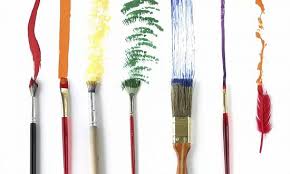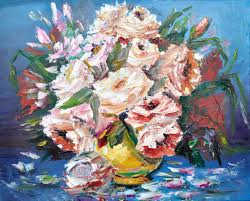represents our century
MASTERPIECES OF PASTEL FROM FUNDS OF THE TREYAKOV GALLERY (part 1)
 The collection of the State Tretyakov Gallery contains about 800 pastels, some were purchased by P.M. Tretyakov.
The collection of the State Tretyakov Gallery contains about 800 pastels, some were purchased by P.M. Tretyakov.
Pastel must be stored under glass. It is very vulnerable: it can fall off from a concussion, all kinds of travels are dangerous for it, it is disastrously affected by direct sunlight, temperature extremes, excessive dryness or humidity. Constant concern for the safety of “loose” pastel works does not allow them to be often and continuously exposed. To see them in the halls of the museum is a rare and significant event.
The word pastel comes from Italian pasta – pasta or pastry. This is the name of the material for drawing, the technique in which the artist works, and, finally, the artwork drawn with pastel pencils. Continue reading
RUSSIAN ACADEMY OF ART OF ST. PETERSBURG (part 1)
 In 2007, the Russian Academy of Arts celebrates its 250th anniversary. November 17, 1757 (old style – November 6) – The governing Senate of the Russian Empire adopted a decree on the establishment of the “Academy of the Three Noble Arts.” In fact, such an institution in Russia was conceived much earlier, and by that time it had been successfully operating for at least thirty years. The idea of establishing a community of artists was expressed by Peter the Great and his close associates in the 1690s. After visiting the first emperor of Paris and the French academies in 1719, this idea took on a concrete form, but for many cases Peter the Great signed the necessary decree only shortly before his death, December 22, 1724. He proclaimed the creation of a single “Academy of Sciences and Arts” – a fact that is very important today, since the Russian Academy of Arts cherishes the fact that it was born simultaneously with the Russian Academy of Sciences and has been cooperating with it for almost three centuries. Continue reading
In 2007, the Russian Academy of Arts celebrates its 250th anniversary. November 17, 1757 (old style – November 6) – The governing Senate of the Russian Empire adopted a decree on the establishment of the “Academy of the Three Noble Arts.” In fact, such an institution in Russia was conceived much earlier, and by that time it had been successfully operating for at least thirty years. The idea of establishing a community of artists was expressed by Peter the Great and his close associates in the 1690s. After visiting the first emperor of Paris and the French academies in 1719, this idea took on a concrete form, but for many cases Peter the Great signed the necessary decree only shortly before his death, December 22, 1724. He proclaimed the creation of a single “Academy of Sciences and Arts” – a fact that is very important today, since the Russian Academy of Arts cherishes the fact that it was born simultaneously with the Russian Academy of Sciences and has been cooperating with it for almost three centuries. Continue reading
TALKS ON THE ISLANDS OF ART (part 3)
 The desire for a new one, by all means, was imposed on art at the beginning of the 20th century. In canonical arts, in Russian iconography, for example, the artist was free from the search for composition. He directed all his internal energy to spiritualize the image. There is such an opinion in Russian philosophy of art: the more external limitations the artist has, the freer he is internally. I certainly do not call for this. Now this is impossible. Everyone just has their own way.
The desire for a new one, by all means, was imposed on art at the beginning of the 20th century. In canonical arts, in Russian iconography, for example, the artist was free from the search for composition. He directed all his internal energy to spiritualize the image. There is such an opinion in Russian philosophy of art: the more external limitations the artist has, the freer he is internally. I certainly do not call for this. Now this is impossible. Everyone just has their own way.
I also think that virtual worlds stored on infinitely renewable media, or printed with ink of dubious durability, can burst like soap bubbles at any time.
A pile of plastic garbage will be a monument to the 21st century. Continue reading




